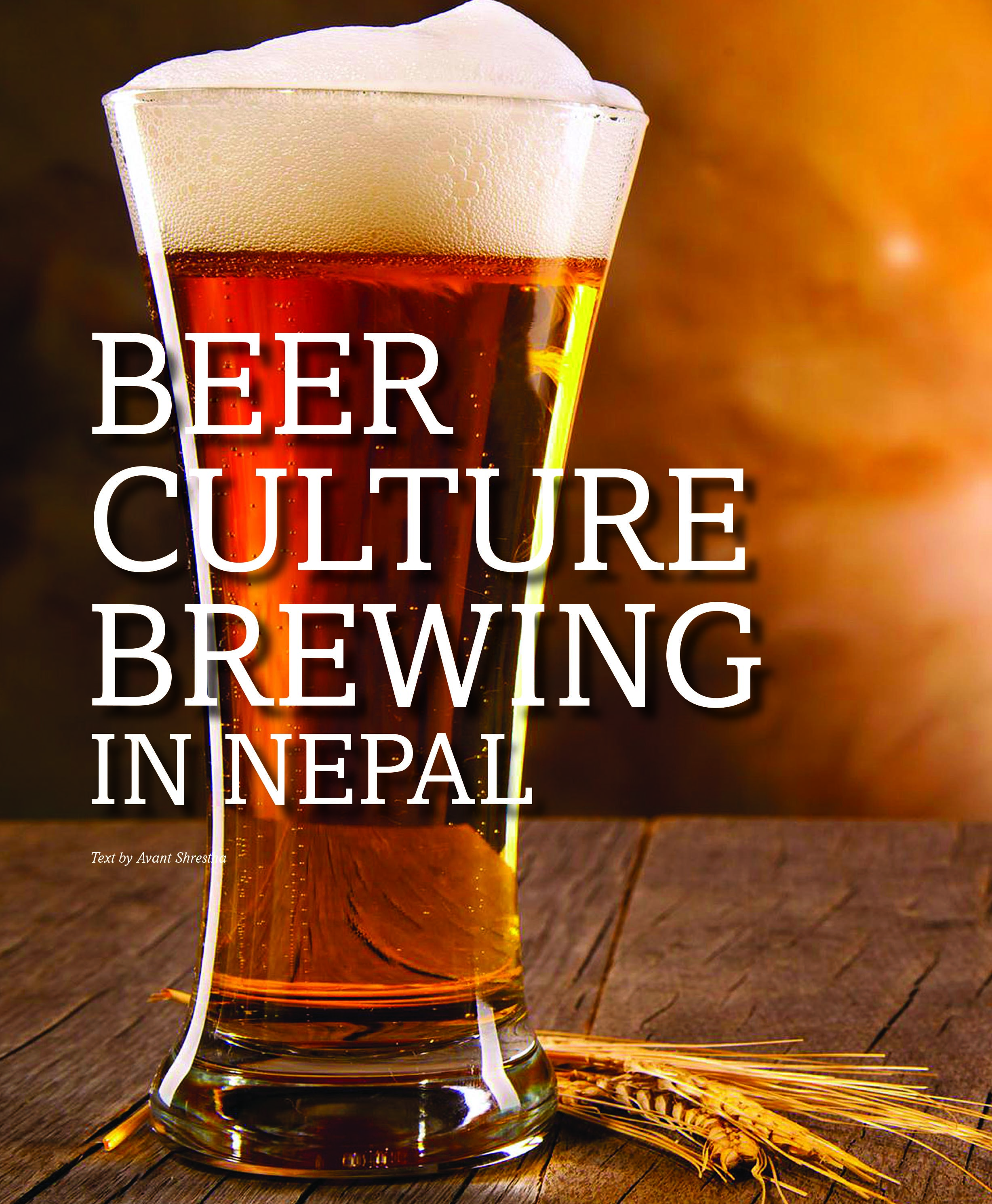
What came first? Bread or beer? The answer really depends on what you prefer. For as long as we know, beer has been a nutritional staple alongside local harvest. Beer basically was the equivalent of bread; an enriched liquored bread that provided required calories and essential vitamins while also being hydrating and more sterile that water.
"For a lot of Nepalis alcohol is a part of the territory of being born here. Ailas, Chhyang, Tongba and Rakshi are stocked in households, especially in rural communities that subsist on farming."
In fact some anthropologists and historians today are looking into the possibility that the first agricultural revolution and the beginnings of human civilization as we know it may have only been possible through our connection with booze.
Meanwhile, our methods of producing potent brews and blends have only become more varied and complex with time. Alcohol itself has become a drink so adaptable from its ancient energy drink status that now, it can be paired with events of either celebration, sorrow or anything in between.
For a lot of Nepalis alcohol is a part of the territory of being born here. Ailas, Chhyang, Tongba and Rakshi are stocked in households, especially in rural communities that subsist on farming. Within cities, people drink a wider variety of beverages: wine, hard liquor such as vodka, gin and whiskeys and of course their softer counterpart – the beer. The last beverage on the list is particularly gaining more traction in the country.
Beer companies are reporting sales volumes throughout the country as having gone up in recent years. The popularity of this beverage which can be found in every shop refrigerator, is definitely a sign of the change of taste as people are growing more familiar with the Western palette besides what is locally manufactured.
Jim Jones, an importer of American and Vietnamese craft beer, when asked about the beer culture in Nepal, hailed it as the fastest growing alcohol sector in the nation with a huge market. Jones stated, “There is a market of 15 to 17 million people in Nepal who are of drinking age.” Regardless of their drinking preference and consumption habit, the fact that more than half of population in the country is of drinking age has definitely captured the interest of new and old beer manufacturers and distributors in the country. Additionally based on how heavily beer is marketed via various mediums in every placeable corner of cities and highways; one can assume that beer companies are making strong moves to capture this lucrative market.
In recent times, increase in the consumption of strong beer in the rural areas and shift in preference for craft beers has been well noted. Sources from one of the major beer manufacturer and market leader in the county claims, “In Nepal, the industry is divided into two different segments; one where consumers prefer strong beer and which is more popular in the outskirts of the city and rural areas. In metropolitan cities like Kathmandu and Pokhara, strong beer is yet to capture the market”. The main contributing reason why strong beer is only popular and consumed by certain segments in the market is based on economics and not on taste. Kusang Tamang, Founder and Director of Nepal Craft Beer Distributors supports the statement, saying “Strong beer is sold mostly in rural areas where people want to get drunk without spending too much money. In short it’s cheap and it gives you the kick.”
"There is a market of 15 to 17 million people in Nepal who are of drinking age."
There are number of economic, social and even preferential reasons why consumers choose to drink beer. “The drinking culture is supported by the low alcoholic content of the product and today has been given soft-drink status resulting in significant increase of beer consumption,” claim experts. Craft beer breweries (traditionally small and more independent breweries) are constantly introducing new tastes into the Nepali beer dictionary. The flavour itself is becoming the novel selling point of the beverage.
Jones, who is currently focusing on craft beers, compares the burgeoning craft beer industry of Nepal to that of the US 50 years ago when home brewing was legalised and beer culture really started to catch on. “It is similar to America, in the way that it was imports that took hold first and then local brewers started mimicking those beers and putting their twist on it and now America is making beers you have never had before,” Jones explains.
For Jones the biggest hurdle in the path of craft beers is the already dominant companies in the market. The small breweries can’t compete with these monoliths, in a capital intensive industry like brewing. The bigger and established companies have the capacity to spend a lot of money to get premium shelf space in markets as well as a place in every store refrigerator. “Their hegemony on the shelves balances out their costs as any competition is easily snuffed out,” expresses Jones.
However, craft beers are not offering the same experience as the generic lager brands that currently dominate the market. According to many experts within the industry, the small scale production of these beers is a reflection of the niche audience that they cater to. A small, growing, and dedicated group of converts have discovered that the world of beer is not limited to just the most publicised brands. In their perspective, craft beers are slowly but surely bringing about changes in the Nepali palette when it comes to drinking. The association of deeper flavours with higher alcoholic content is peeling away as beer is increasingly obtaining an image of being a flavourful soft drink.
Of course as with the case of breweries in the US, there is a possibility that a specific craft beer will eventually go on to become a staple, but for most part, in the current sense of Nepali policies there are many issues leading up to a craft beer attaining immediate success in the market.
Over the years, laws have shown a trend towards stifling craft beer business. As a small scale business and as an art form everything about craft beer makes sense, however there are lots of legal and health protocols that needs to be applied. Kabindra Purush Dhakal, Founder of Ventures Café and a avid home brewer expresses, “One prime example being the wishy-washy treatment of the licensing process for breweries. Licenses for home brewing are difficult to obtain and once certified, they face lager manufacturers that have been in business much longer than themselves.
“Licenses are no longer issued to new brewers as new policies aim to focus on the present license holders and their betterment”, Dhakal adds.
Contradicting this are the major breweries that call to attention possible lowering in quality due to contamination in small home breweries. “Small scale breweries are interesting because they offer consumers more choices. But having said that, we have to consciously look at two things when it comes to beer: the quality of the product and how they maintain that product,” explains the source.
The future of the beer industry and its culture is definitely growing with new beers being locally manufactured and launched, and international brands being more readily available in the market. “I think both the craft beer and traditional beer market will continue to grow, assuming that the market is allowed to develop on its own and corruption and monopolies don’t alter the market,” shares Jim Jones.
Kusang Tamang along with most other stakeholders in the business is cautiously optimistic about the future of beer in the country. Despite being a globally increasing trend, it is not certain that smaller businesses will flourish. Government policy regarding small enterprises is always susceptible to challenges and change, and big businesses have much greater power to locally affect policy makers.
For a lot of people in the country, beer is here to stay because of its casual nature and ease of procurement. As one beer lover says, “Beer is easy to drink, lasts longer at the restaurant, and does not subject one to the prejudices associated with a brand and its affordability. If you are a whiskey drinker for example, you are judged on your status from what’s in your glass. Are you drinking a Black Label, single malt or a local brand? With beer, none of this matters”.



-1765706286.jpg)
-1765699753.jpg)

